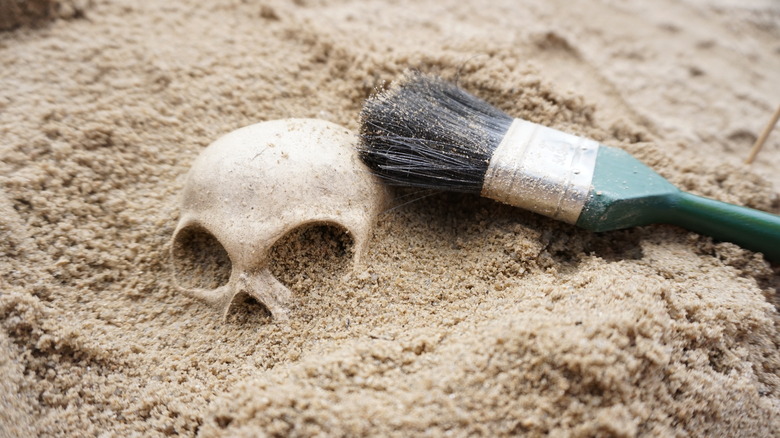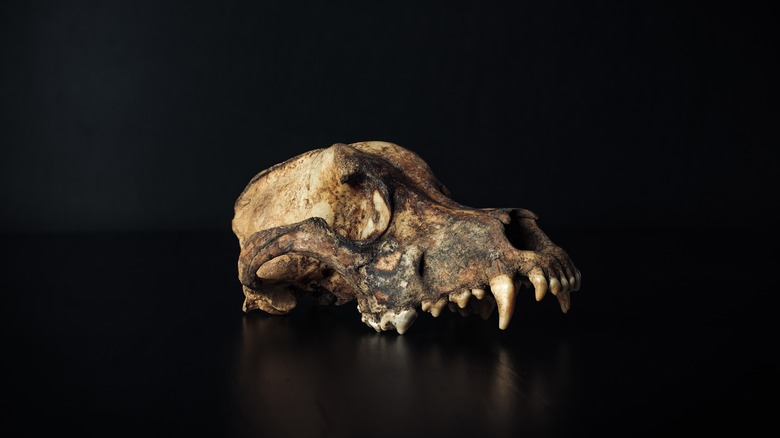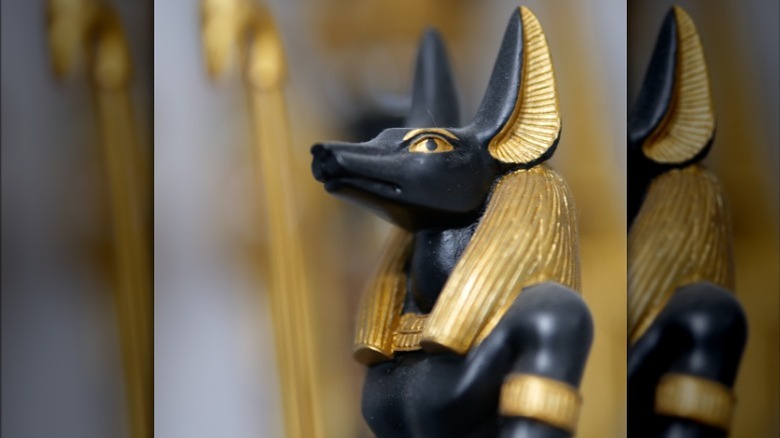An Egyptian Archeological Dig Found The Remains Of One Boy And 142 Dogs
There have been plenty of things discovered in Egypt throughout the years, including tombs, mummies, ancient structures, and relics that tell various stories about history. Archaeologists study artifacts to understand how people lived, what tools they used, their rituals, and their beliefs (via National Geographic). Burial sites are one of the most interesting things uncovered during excavations, and while many tombs and graves have been identified, one archaeological dig revealed a curious surprise.
The Centre for Egyptological Research of the Russian Academy of Sciences (CEI RAS) said that archaeologists were digging on a site in the Faiyum necropolis located in Middle Egypt when they uncovered the remains of a child buried together with more than a hundred dogs, as reported by Euro Weekly News. The discovery is unique, as there has only been one recorded instance wherein a child was buried with dogs, and that was uncovered in Hierakonpolis, located in Upper Egypt. In that instance, however, there were only a dozen dogs with the child's remains, per The Jerusalem Post.
Details about the discovery
According to Heritage Daily, the child was estimated to be about 8 years old, and a total of 142 dogs' remains were counted. Galina Belova, a zoologist, studied the remains and stated that the dogs all died at the same time, but there was no evidence that they were violently killed. Belova said that they most likely died of drowning during a flood. Approximately 87% of the animal remains were said to be puppies, and archeologists estimate that the burial site dates back to the Roman period (via Euro Weekly News). One interesting observation was that there were blue pieces of clay found with the remains. Research showed that it was a color typically found in reservoirs in ancient times, which gives credence to the flood theory.
One thing that puzzled the archaeologists was that the child was buried with a linen bag over his head. Per Greek Reporter, there was another body unearthed in another necropolis with a bag over his head, but he had an arrow in his chest, which suggested that the person died by execution. However, there were no traces of violence on the remains of the child found with the 142 dogs. It is suspected that the child was the caretaker of the dogs at the time of the flooding.
Significance of dogs in ancient Egyptian culture
Dogs were reportedly valued in ancient Egypt. As noted by World History, they were used for hunting, kept as pets, or companions in the afterlife. Anubis — an Egyptian deity that accompanied the dead in the afterlife — is depicted with the head of a jackal and a human body, and mummified dogs were brought as sacrifices to the deity at his temple in Cynopolis. Ancient Egyptians considered killing collared dogs a crime, and it came with harsh punishments.
As reported by Ancient Origins, the 142 dogs' remains found were carefully positioned on the burial site, which means that they were considered important and beloved. The dogs were of different breeds, but more tests will have to be conducted on their DNA to determine what their purpose was, as different dog breeds were used for different jobs. The exact reason why the child was buried with a bag over his head alongside so many dogs remains a mystery for now.


